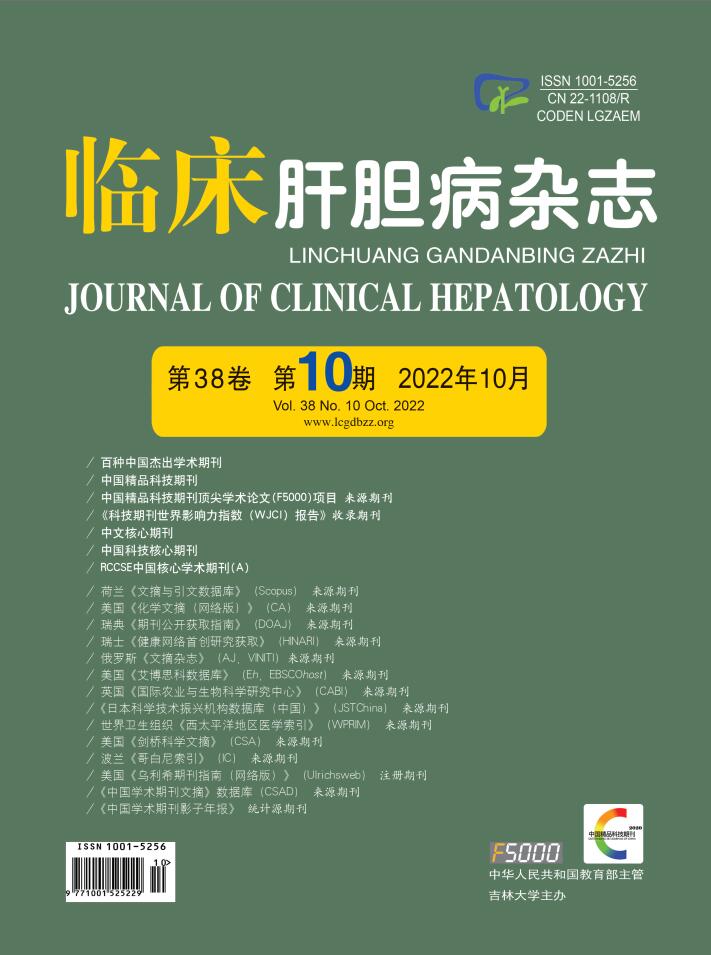| [1] |
Chinese Medical Association, Chinese Medical Journals Publishing House, Chinese Society of Gastroenterology, et al. Guideline for primary care of drug-induced liver injury (2019)[J]. Chin J Gen Pract, 2020, 19(10): 868-875. DOI: 10.3760/cma.j.cn114798-20200812-00900. |
| [2] |
DEVARBHAVI H, DIERKHISING R, KREMERS WK, et al. Single-center experience with drug-induced liver injury from India: causes, outcome, prognosis, and predictors of mortality[J]. Am J Gastroenterol, 2010, 105(11): 2396-2404. DOI: 10.1038/ajg.2010.287. |
| [3] |
HU PF, XIE WF. Corticosteroid therapy in drug-induced liver injury: Pros and cons[J]. J Dig Dis, 2019, 20(3): 122-126. DOI: 10.1111/1751-2980.12697. |
| [4] |
Drug-induced Liver Disease Study Group, Chinese Society of Hepatology, Chinese Medical Association. Guidelines for the management of drug-induced liver injury[J]. J Clin Hepatol, 2015, 31(11): 1752-1769. DOI: 10.3969/j.issn.1001-5256.2015.11.002. |
| [5] |
|
| [6] |
SGRO C, CLINARD F, OUAZIR K, et al. Incidence of drug-induced hepatic injuries: a French population-based study[J]. Hepatology, 2002, 36(2): 451-455. DOI: 10.1053/jhep.2002.34857. |
| [7] |
BJÖRNSSON ES, BERGMANN OM, BJÖRNSSON HK, et al. Incidence, presentation, and outcomes in patients with drug-induced liver injury in the general population of Iceland[J]. Gastroenterology, 2013, 144(7): 1419-1425. DOI: 10.1053/j.gastro.2013.02.006. |
| [8] |
SHEN T, LIU Y, SHANG J, et al. Incidence and etiology of drug-induced liver injury in mainland China[J]. Gastroenterology, 2019, 156(8): 2230-2241. DOI: 10.1053/j.gastro.2019.02.002. |
| [9] |
NAVARRO VJ, KHAN I, BJÖRNSSON E, et al. Liver injury from herbal and dietary supplements[J]. Hepatology, 2017, 65(1): 363-373. DOI: 10.1002/hep.28813. |
| [10] |
European Association for the Study of the Liver. EASL clinical practice guidelines: Drug-induced liver injury[J]. J Hepatol, 2019, 70(6): 1222-1261. DOI: 10.1016/j.jhep.2019.02.014. |
| [11] |
MOHAMMAD I, STARSKAIA I, NAGY T, et al. Estrogen receptor α contributes to T cell-mediated autoimmune inflammation by promoting T cell activation and proliferation[J]. Sci Signal, 2018, 11(526): eaap9415. DOI: 10.1126/scisignal.aap9415. |
| [12] |
ROBLES-DIAZ M, GARCIA-CORTES M, MEDINA-CALIZ I, et al. The value of serum aspartate aminotransferase and gamma-glutamyl transpetidase as biomarkers in hepatotoxicity[J]. Liver Int, 2015, 35(11): 2474-2482. DOI: 10.1111/liv.12834. |
| [13] |
LI X, XU H, GAO P. Increased red cell distribution width predicts severity of drug-induced liver injury: a retrospective study[J]. Sci Rep, 2021, 11(1): 773. DOI: 10.1038/s41598-020-80116-4. |
| [14] |
YU YC, CHEN CW. Pathogenesis of drug-induced liver injury: Current understanding and future needs[J]. J Clin Hepatol, 2021, 37(11): 2515-2524. DOI: 10.3969/j.issn.1001-5256.2021.11.003. |
| [15] |
FONTANA RJ. Pathogenesis of idiosyncratic drug-induced liver injury and clinical perspectives[J]. Gastroenterology, 2014, 146(4): 914-928. DOI: 10.1053/j.gastro.2013.12.032. |
| [16] |
PARK BK, LAVERTY H, SRIVASTAVA A, et al. Drug bioactivation and protein adduct formation in the pathogenesis of drug-induced toxicity[J]. Chem Biol Interact, 2011, 192(1-2): 30-36. DOI: 10.1016/j.cbi.2010.09.011. |
| [17] |
HU PF, WANG PQ, CHEN H, et al. Beneficial effect of corticosteroids for patients with severe drug-induced liver injury[J]. J Dig Dis, 2016, 17(9): 618-627. DOI: 10.1111/1751-2980.12383. |
| [18] |
BJÖRNSSON HK, GUDBJORNSSON B, BJÖRNSSON ES. Infliximab-induced liver injury: Clinical phenotypes, autoimmunity and the role of corticosteroid treatment[J]. J Hepatol, 2022, 76(1): 86-92. DOI: 10.1016/j.jhep.2021.08.024. |
| [19] |
KARKHANIS J, VERNA EC, CHANG MS, et al. Steroid use in acute liver failure[J]. Hepatology, 2014, 59(2): 612-21. DOI: 10.1002/hep.26678. |
| [20] |
DONG JL, JIA L, YANG J, et al. Expression features of glucocorticoid receptor and its association with treatment outcome in patients with hepatitis B virus-related acute-on-chronic liver failure[J]. J Clin Hepatol, 2020, 36(6): 1252-1257. DOI: 10.3969/j.issn.1001-5256.2020.06.013. |













 DownLoad:
DownLoad: